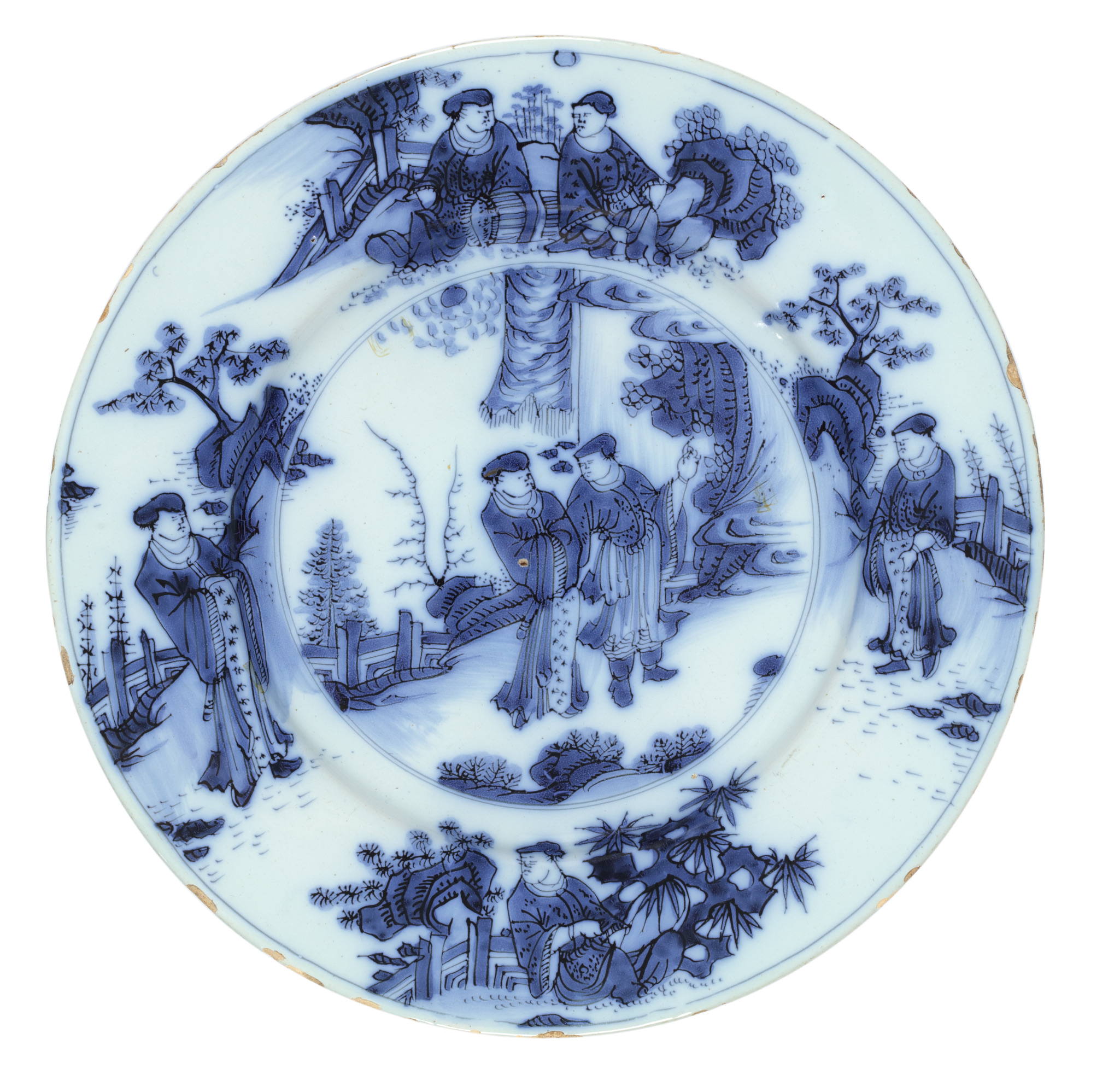![]()
Images on this website are licensed under a
Creative Commons Attribution-NoDerivs 3.0 Unported License.
OBJECT
D2405. Blue and White Plaque Chinoiserie Plate
Delft, circa 1680
Marked SVE in blue for Samuel van Eenhoorn, the owner of De Grieksche A (The Greek A) factory from 1678 until 1685
Painted in the transitional style, depicting two Asian figures conversing and locked in gaze upon each other, the figures positioned in the center of the plate within a garden setting, surrounded by Asian figures engaged in various scenes within the lush confines of a garden decorated on the wide rim.
DIMENSIONS
Diameter: 25.3 cm. (10 in.)
NOTE
In 1678 Samuel van Eenhoorn inherited from his father one of the most famous and prestigious Delftware factories that history records, De Grieksche A (The Greek A). The family adventure started in 1658 when Wouter van Eenhoorn – Samuel’s father – bought what originally was a beer brewery. This particularly seasoned businessman already owned several Delftware-related businesses, including De Drie Posteleyne Astonne (The Three Porcelain Ash Barrels) factory that was also located on the Lange Geer in Delft, just next to his new acquisition. The renown business stayed within the family from its creation until 1722.
He and his son Samuel specialized in creating delicate blue and white faience in the style of the porcelain made in China during the Kangxi period (1662-1722) and the transitional style (1620-1644). The chinoiserie decorations and the design of the objects were of such a fine quality that they were even referred to as “porcelain”. Thanks to its superb craftsmanship and Wouter’s management skills, De Grieksche A acquired very rapidly an unexampled notoriety, to such an extend that in 1667, the factory received a commission from the city of Delft to make several “porcelain pieces” for the wife of the Swedish ambassador in Holland. Wouter van Eenhoorn, who had a perfect understanding of the market, rapidly realized that adopting an international vision could significantly expand his business. In 1674, his son Samuel who had just been admitted to the Guild of Saint Luke, became a shareholder of the company and was appointed as a shopkeeper. One of his responsibilities was to develop the international orders. Within a year, he already had established contact in Rouen, the bustling center of France’s faience industry and at the end of his ownership, his clientele had extended from Amsterdam to London, Hamburg and London.









